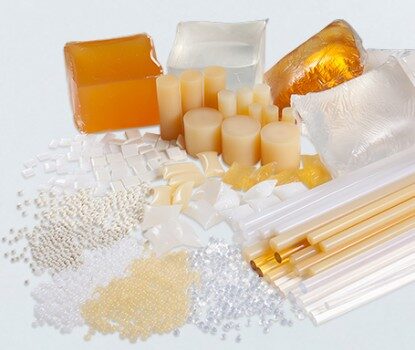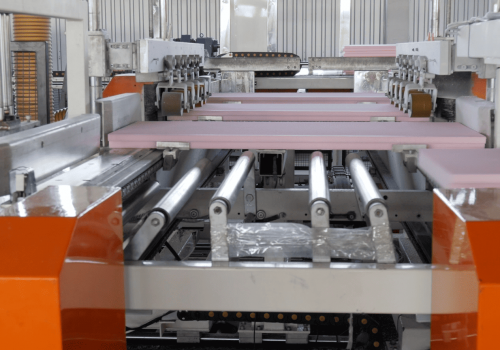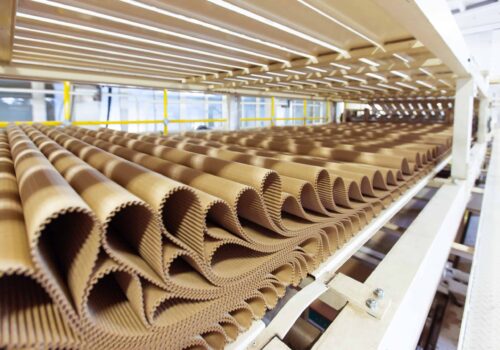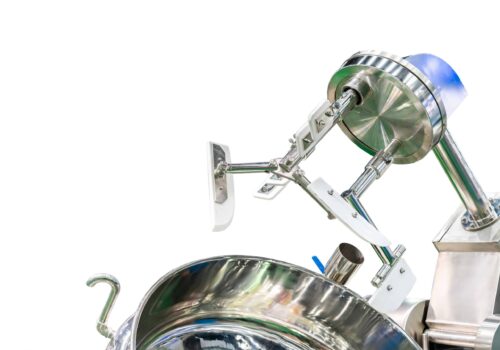Milk of Lime Slurry Real-time Monitoring and Control
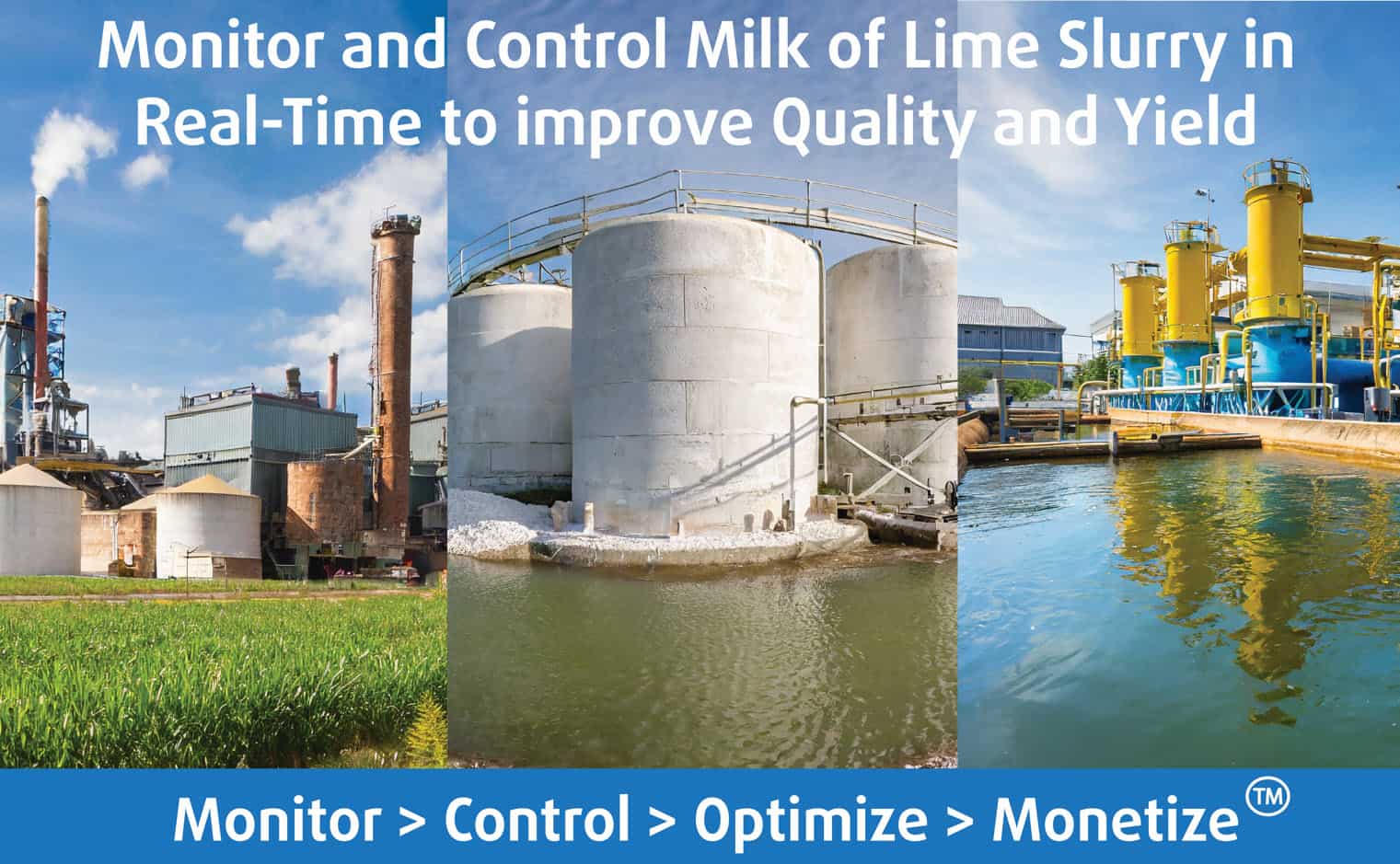
For process engineers, it’s essential to develop an efficient and reliable method to monitor and control the milk of lime slurry in the production of the target product. The key to this process is to find a method that maintains the slurry quality, achieves tight control, and readily reacts to any changes in raw materials or the desired lime slurry concentration. This document will discuss the current state of Milk of Lime production, different techniques available for control, their benefits and drawbacks, and outline the best approach for the production process while considering factors like concentration, system size, raw material purity, and desired end product, emphasizing the benefits of Rheonics SRD Density and Viscosity meter.
1. Lime Slurry Overview
Production of Milk of Lime Slurry
Milk of lime production involves mixing calcium oxide, CaO, with water in a heat-releasing reaction called lime slaking. This reaction initially produces a fine powder solution of calcium hydroxide known as hydrated lime or slaked lime. Further addition of water forms the liquid solution called milk of lime. The slurry is typically mixed to a concentration where it still flows easily but carries a high solid fraction of calcium hydroxide.
To safely handle the heat generated during the slaking reaction, a specialized equipment called a lime slaker is required. Maintaining the proper reaction temperature keeps the quality of the produced hydrate consistent and ensures good reactivity which helps minimize the environmental impact, and ultimately improve the end-product yield. Users of milk of lime have the option to slake quicklime on-site or obtain pre-slaked dry calcium hydroxide. The latter can be easily mixed with water without the need for a slaker. Alternatively, ready-made milk of lime can be obtained from suppliers.
The resulting aqueous suspensions are characterized by the concentration of the mass of the solid matter (% solids), the chemical reactivity of the slurry to neutralize an acid, and the distribution of the sizes of the particles in suspension (controlling in part viscosity). These characteristics determine the properties of the slurry, mainly its viscosity and its reactivity.
Proper storage of milk of lime is crucial as its quality deteriorates over time. The particles of calcium hydroxide react with carbon dioxide (CO2) in the atmosphere, resulting in the formation of calcium carbonate lime (CaCO3). This negatively affects the effectiveness of the slurry in various processes and applications.
Figure 2: Milk of lime slurry process schematic [2].
Sourcing and Alternatives for Milk of Lime Slurry
The primary raw material for milk of lime slurry, quicklime, is sourced from limestone, a sedimentary rock composed primarily of calcium carbonate (CaCO₃). Limestone is abundant worldwide and is mined commercially in countries with significant limestone deposits, including the USA, China, and India.
Several alternatives to milk of lime slurry exist, primarily in applications where its use is for pH control or water treatment. These alternatives include soda ash (sodium carbonate), caustic soda (sodium hydroxide), and magnesium hydroxide. However, each of these alternatives comes with its own set of benefits and drawbacks, and the selection often depends on the specific application and local economic considerations.
Milk of Lime Slurry Density Table
As explained before, chemically, a lime slurry is a suspension of calcium oxide CaO in water, called quicklime. Hydrated lime Ca(OH)2 is a suspension of calcium hydroxide Ca(OH)2 solid particles (powder) – between 18% and 40% concentration- in water, known as hydrate lime, obtained from the hydration of quick lime.
The next plot shows that the density of a milk of lime slurry increases with concentration. This is because the calcium particles in the slurry displace water, which is less dense.
Figure 3: Milk of Lime Slurry Density Table.
The plot also shows that the density of milk of lime slurry varies with temperature. This is because the calcium hydroxide particles are more soluble in hot water, which reduces the density of the slurry.
The following table shows the density of milk of lime slurry at different percentages of CaOH2 in water. The density increases linearly with the increase in mass percentage of lime in the slurry. It’s important to note that these are approximate values, and the actual density may vary depending on factors like temperature and pressure.
At percentages above 30%, some lime slurries become quite stiff. At 35% additives are used to make the slurry pumpable. Generally, at 40%, slurries can not be pumped anymore.
Table 1: Lime slurry reference density [3].

Lime slurry consistency with concentration
There are three types of lime suspensions:
- Wet putty-like material with 30-35% quicklime slurry.
- Creamy material that can be poured or pumped, containing about 20-25% quicklime – known as Milk of Lime.
- Watery consistency, milky in color, with a concentration of less than about 18% (typically 10-15% or 1-1.5 lb/gal)
Once stabilized, lime slurry is a stable suspension and is not corrosive. Stabilization occurs when all of the water has fully reacted with the calcium hydroxide.
Industrial Applications of Milk of Lime Slurry
– Water Treatment: Lime has various uses in water treatment processes, including softening, agglomeration, flocculation, and pH adjustment. It is commonly added to drinking water to control carbonate deposition and extend the lifespan of distribution systems.
In wastewater treatment, lime acts as a coagulant by neutralizing the charge on colloid particles, allowing them to be easily removed. It also promotes the flocculation of suspended impurities, making decanting more efficient. Lime can be used in combination with metallic salts or polymers as a flocculating agent.
Additionally, lime can increase the pH levels of water, causing the precipitation of heavy metals as hydroxides. This makes it easier to collect and remove them. Lime also aids in precipitating phosphates and sulfates, as well as heavy metals, as insoluble salts enhancing their removal efficiency.
Figure 4: Water Treatment process and SRD density and viscosity meter
– Sugar Refining: The process of purifying sugar beet or cane juice involves the addition of milk of lime and carbonation gas. Monitoring the quality of the milk of lime at multiple stages is crucial for achieving improved purification results and an optimized process.
Figure 5: Sugar refining process and SRD density and viscosity meter
– Flue Gas Desulphurization: Used extensively in power plants and industries with large boilers, milk of lime slurry aids in reducing sulfur dioxide emissions by reacting with and neutralizing these harmful gases.
– Paper Manufacturing: In the paper industry, milk of lime slurry is used for digesting wood in the sulfate or kraft process. It breaks down the lignin present in wood, making paper production more efficient.
Figure 6: Paper manufacturing process and SRD density and viscosity meter
– Steel Production: The steel industry uses milk of lime slurry for fluxing, desulfurization, and in the basic oxygen steelmaking process. It helps in removing impurities, improving the quality of steel produced.
– Mining of non-ferrous metals: Removal of non-ferrous metal from the ore in flotation processes where milk of lime is used as pH modifier for better effectiveness of frothers and collectors or in metathesis reactions where it is used to precipitate the salt of the non-ferrous metal. Lime slurry is used to control the pH value in acid neutralization and cyanide leaching process in gold refining.
– Chemical manufacturing: Lime slurry is used as pH adjuster, desiccant, or for metathesis reaction.
– Construction: Milk of lime is used for ground stabilization for construction and as a component of building materials.
– Bleaching: Lime slurry is used for bleaching materials such as linen, glass, and paper pulp.
2. Monitoring and Controlling Techniques
Method 1: Offline Density Measurement
- Benefits: Cost-effective; simple to implement
- Drawbacks: Unreliable; slow in responding to changes; manual intervention
- Applicability: Can be used in low-precision requirements, smaller system sizes, or infrequent concentration changes.
This technique involves taking periodic measurements of the milk of lime slurry density using an offline density meter. This density meter is separate from the process stream and requires manual intervention. This method can be cost-effective and relatively simple to implement; however, it can be quite slow and unreliable in response to concentration changes.
Method 2: Inline Density Measurement and Manual Feed Rate Adjustment
- Benefits: Quicker density measurements; greater accuracy than Method 1
- Drawbacks: Slow adjustment of feed rates; manual intervention; risks of human error
- Applicability: This could be useful in cases where the slurry concentration doesn’t change frequently, and the manpower is available for manual adjustments.
Here, an inline density meter like the Rheonics process meter SRD is used to continuously measure the milk of lime slurry density. This meter provides real-time monitoring of the process stream, making it quicker and more accurate than offline measurements. However, feed rate adjustments are still handled manually, which can result in slower reaction times and potential human error, like over-diluting or under-diluting the solution.
Method 3: Automatic Inline Monitoring and Control (Recommended)
- Benefits: Real-time accurate measurements; fast control adjustments; low human intervention; consistent quality
- Drawbacks: Higher initial installation cost
- Applicability: Ideal for larger systems, frequent concentration changes, or high-precision requirements.
This method employs an inline process density meter like the Rheonics process meter SRD to monitor milk of lime slurry density in real-time, combined with a simple controller to adjust the feed rates automatically. This setup provides accurate density measurements and allows the controller to make fast adjustments in response to concentration changes, maintaining slurry quality and achieving tight control. While this method comes with a higher initial installation cost, the benefits of consistent quality, performance, and reduced manpower involvement make it the recommended choice.
Figure 7: Inline process density meter SRD control milk of lime slurry concentration mass
3. Rheonics Inline Process Density Meter SRD
The Rheonics Inline Process Density Meter SRD is an inline density meter ideal for controlling the density of milk of lime in a lime slaker. The SRD is accurate and reliable, and it can operate in a wide range of temperatures and pressures.
Figure 8: Rheonics SRD Inline Density and Viscosity Meter
Suitability for Lime Slaker Control
The Rheonics Inline Process Density Meter SRD is well-suited for lime slaker control for the following reasons:
- Wide temperature range: The SRD can operate in a temperature range of -40 to 300 °C (-40 to 572 °F), which covers the entire temperature range of a lime slaker.
- High accuracy: The SRD has an accuracy of 0.001 g/cc (with higher accuracy available), which is sufficient for most lime slaker applications as it resolves mass/concentration changes of less than 1%.
- Fast response time: The SRD has a fast response time within seconds which allows for real-time control of the lime slaker.
- Easy to install: The SRD is an easy to install density meter, without need for any calibration or commission steps. The sensor can be directly installed in the tank or line and powered up to start measurement. Under certain conditions, mixing tanks may induce noise to the SRD readings, rendering not suitable for high speed mixings, learn more here.
- Easy integration with PLC: Support for a wide range of industrial protocols and PLC. Check the range of PLC and protocols used by SRD that are used by customers to integrate with their PLC and IPC of choice.
- Simultaneous measurement of viscosity and temperature: Viscosity of lime slurry is shown to be a good indicator of the quality of the lime slurry. SRD can detect ageing related degradation of lime slurry [1].
Table 2: Comparison of various lime slurries in tanks and its ageing properties. [1]

Utilizing Rheonics SRD for Monitoring Alternative Slurries
The inline process density meter, Rheonics SRD, is a versatile tool that can be used for monitoring not just milk of lime slurry, but also its alternatives such as soda ash, caustic soda, and magnesium hydroxide. Given these substances’ different densities and flow characteristics, the Rheonics SRD’s precision and adjustability make it an excellent choice for monitoring their concentrations in real-time. This ensures that the correct amounts are being used, maintaining the optimal pH level or treatment efficiency. Furthermore, the integration of the Rheonics SRD with control systems allows for automatic adjustments, providing a seamless operation, irrespective of the material in use.
Benefits of using Rheonics inline process density meter SRD
- Online real-time measurement of density, process can be controlled and operated continuously without need for measurement samples
- Direct output from meter of density, specific gravity, concentration, °Be (Degrees Baumé), °Bx (Degrees Brix)
- Efficient use of lime slurry, improving quality and saving cost
- Reliable, repeatable, reproducible and accurate meter
- Direct measurement without influence of operating temperature, presence of solids in the fluid
- Optimize yield of the production process using lime slurry
- Easy installation in process lines, tanks, reactors without need for external flow cell
- Use the same meter to also measure end product, utilizing the direct output in unit of choice (°Bx, °Be, SG, concentration, and others).
Figure 9: Installation of SRD density meter in tank and recirculation line
Advantages of Rheonics balanced torsional resonator (BTR) based density meter over alternatives
- Direct measurement of density instead of through empirical measurement principles based on absorption of microwave or radiation (Microwave and radiation based methods ascertain the relative change in absorption and relate it to density through fluid calibration and need periodic re-calibration)
- Direct measurement at the center of the flow line instead of at wall (as in electrode based measurements)
- No impact of deposits on the walls (against sever effect on microwave based technologies)
- Streamlines sensing element with EHEDG and 3-A certifications, eliminates any chance of clogging (as compared to the tuning fork based technologies)
- Ability to work with both low viscosity and high viscosity fluids
- No need of re-calibration during commissioning or over the lifetime
- In-built calibration verification to meet FDA and other quality control norms
Table 3: Comparison of various density meters based on different technologies.
| Characteristics | Measuring Technologies | |||||
| Balanced Torsional Resonator | Turning Fork | Vibrating Tubes | Ultrasonic | Microwave | Radiation | |
| Density range | 0-4 g/cc | 0-3 g/cc | 0-3 g/cc | Measures sound speed in fluid 0-4 g/cc | Measures total solids 1%-50%TS 0-2 g/cc | 0-1 g/cc |
| Density accuracy | 0.001 g/cc | 0.001 g/cc or better under defined conditions | 0.001 g/cc or better at best conditions | 0.005 g/cc | 0.005 g/cc | 0.01 g/cc |
| Viscosity rating and influence | Up to 10,000 cP Simultaneously measures fluid dynamic viscosity | Up to 50 cP Error increases (0.004 g/cc) at high viscosity fluids (200 cP) | Needs calibration for each viscosity fluid | Not measured | Not measured | Not measured |
| Pressure rating and influence | 0 to 15,000 psi (1000 bar) Fully compensated No need for calibration | 0 to 3000 psi (200 bar) Significant effect, not compensated | 0 to 750 psi (50 bar) | 0 to 1500 psi (100 bar) | 0 to 1500 psi (100 bar) | 0 to 3000 psi (200 bar) |
| Temperature rating and influence | -40 to 300 °C 0.1°C stability Small mass of sensor Isothermal conditions enable excellent density accuracy No difference in factory vs. field conditions. | -50 to 200 °C No inbuilt temperature sensor Less than 1°C stability Huge mass of sensor Needs external temperature measurement | Max. 150°C 0.1°C stability Sensor tubes wrapped in insulation with controlled heaters Fast changing temperatures lead to high errors in measurement | 0 to 150 °C | 0 to 150 °C | 0 to 400°C |
| Flow conditions | Static or flowing. No influence of flow rate on sensor operation. | Needs well defined flow regime. Needs a large adapter for each pipe diameter. | Static or flowing. Needs flow rate compensation. | Single phase fluids. Affected by presence of bubbles, solids or other impurities. | Static or flowing. No influence of flow rate. Tolerant to impurities in fluid | Single or muli phase flows. Not affected by impurities. |
| Installation | Smallest inline process density sensor in market (1” x 2.5”) Multiple process connections offered | Needs a large adapter for each pipe diameter Large sensor (2” x 10”) | Not suitable for large pipe diameters Large sensor system (10”x20”) | External and intrusive variants Big, heavy sensor Requires unique housing for small lines | External Big, heavy sensor and housing For 2” pipes or above | External For small pipes emitter and transmiter need to be placed further away Calibration required |
| Tank Installation | Compatible | Compatible | Not compatible | Compatible styles but suffer from deposits problem | Not compatible | Not compatible |
| Variants | Customizable in length (flush, short and long) and design (∅30 mm standard body and ∅19 mm variant) | Customizable in length | None | None | None | Adapts to straight pipes and bends |
| Unit costs | $ | $$ Needs frequent cleaning due to plugging and re-calibration | $$$ | $$ Calibration with fluids to define the baseline | $$ Baseline calibrations required | $$$ Baseline calibration Radiation source control regulations |
| Installation effort | 0 to Low Zero maintenance No field calibration Self cleaning design | High Frequently plugged, needs cleaning Needs re-calibration in periodic interval | Medium Needs commissioning calibration | Medium Needs commissioning calibration | Medium Needs commissioning calibration | High |
| Maintenance | None if no deposition on the sensing element | Coating failure and deposits on sensor | Frequent calibration | Frequent calibration | Frequent calibration | Frequent calibration |
| Lifetime cost to customer | $ | $$$ | $$$$$ | $$ | $ | $$ |
| Weakness | None | Huge wall effect, requires special adapters for each flow condition | Bulky installation Recalibration needed | Too sensitive to flow conditions | Low accuracy | Last one in accuracy |
4. Implementation Strategy
The implementation of automatic inline monitoring and control system can be broken down into the following steps:
Selection of Equipment:
The selection of an appropriate inline density meter like the Rheonics SRD is the first step. Make sure to choose a model that matches the specific requirements of your process, such as the slurry’s characteristics and the desired level of control precision. Find out all SRD variants here.
Installation:
The inline density meter can be installed directly into the process piping or in a tank, depending on the specific application requirements. Review Rheonics SRD installation requirements.
For process line installation:
Rheonics SRD density meter can be easily integrated into an existing pipeline, due to the customizable process connections and sensor probe variants.
Main installation types are perpendicular and horizontal to the pipe. Decision is taken based on the installation restrictions of space, funcionality, fluid type and others. See next table with a comparison of the two for Milk of Lime Slurry.
Table 4: Inline pipe installation – Parallel and perpendicular comparison
| Perpendicular | Parallel | |
|---|---|---|
| Description | The sensor probe is installed at 90° from the pipe. SRD’s probe tip is recommended to be allign with the flow, see more here. | The sensor probe is installed along or axial to the pipe. Usually requires a bend pipe. Fluid is recommended to be against the SRD’s probe axis. Sensing element is concentric and in the middle of the line. |
| Advantages | Easier installation - Usually it only requires a weldolet. | Having the fluid along the sensor probe axis is the ideal installation for the SRD. Less likely to have deposits affecting the sensing element. Rheonics offers flow cell accessories for a parallel installation |
| Disadvantages | For high-viscosity fluids there is a risk of sedimentation and deposits around the sensing element base and tip. Mostly, it requires a minimum pipe size of 2.5” (2” for ANSI - OD 60.3mm). Smaller size pipes risk of deposits and not giving enough clearance to the sensing element. | If used for short sensor probes the installation requires a shorten or customized bend. Rheonics offers the FET-15T and sweep bend for connection with NPT 1.25” and Tri-Clamp. For parallel installation some applications require a long insertion probe. Possible reduction in cross section. Most of the time, requires a bend or 90° angle in the pipeline. |
| When installing in a pipe where potential for sedimentation exists (due to improperly mixed CacO3 often), the sensor probe should be installed to avoid the deposits forming around the sensing element. | ||
For tank installation:
For installations in tank, vessels or reactors, not only the SRD sensing element needs to be free of obstructions, but the sensor probe should be away from moving objects that can hit the unit during operation.
Rheonics most common solutions for installation in tanks are the use of the Tank Mount Adapter – TMA-34N, and the use of long insertion probes like the SRD-X5. Both allow a secure and reliable installation without the need to empty the tank. Next table compares both options.
Table 5: Inline tank installation – Tank Mount Adapter and Long Insertion Probe comparison
| TMA-34N Accessory | Long Insertion Probe | |
|---|---|---|
| Description | It uses the short SRD-X1-34N, threaded in a protective cage. Assembly is extended by a pipe with customized length. Sensor probe is immersed in fluid and the other end is fixed for secure installation. | Single piece sensor probe customized in length and process connection. Referes to SRD-X5 (standard long), -X6 (Slimline) and -X7 (reactor probe). |
| Advantages | Easy to change the insertion length by the user. Cage protects the probe from hits. | Can be used for opened and closed tanks. Flexibility on the design (body diameter). Protective cages are available |
| Disadvantages | Mostly common for opened tanks. | More expensive solution compared to the TMA. |
For further review, visit the article on a comparison between inline installation in tank and pipe.
Calibration and Testing:
Once installed, the density meter should be tested to ensure accurate measurements. This step includes verifying that the meter readings match the known slurry density and adjusting the meter as necessary.
Integration with Control Systems:
The density meter should be integrated with the control systems. This allows for automatic adjustments of the feed rate in response to changes in slurry density.
By following this implementation strategy, you can ensure a successful installation and operation of an automatic inline monitoring and control system for milk of lime slurry. This will lead to improved process control, consistent slurry quality, and better end product performance.
Best Practices for Maintaining the Monitoring and Control Systems
- Ensure all of calcium carbonate has reacted with water to form a stable suspension, this takes some time. SRD measurement can show when the density (and viscosity) has stabilized which signifies complete stabilization.
- Regular calibration verification of the inline density meter, ensuring reliable measurements.
- Periodic maintenance and cleaning of the density meter to prevent fouling and ensure proper function.
- Routine inspection of the PID controller and other control equipment to maintain an overall optimized system.
- Proper training of personnel overseeing the monitoring and control systems to handle variations in raw materials, troubleshoot potential issues, and to ensure safety.
- Implementation of standard operating procedures (SOPs) for monitoring, control, and reporting to facilitate communication and maintain a consistent and efficient workflow.
By using an automatic inline monitoring and control method, operators can confidently maintain and control the milk of lime slurry quality to achieve our desired end product’s performance, safety.
5. Conclusion
Monitoring and controlling the milk of lime slurry is a critical aspect of many industrial processes. The choice of technique should consider factors like precision, system size, and frequency of concentration changes. However, for optimal performance and consistent quality, we recommend using an automatic inline monitoring and control method. Proper maintenance and adherence to SOPs will ensure reliable results while also providing. Rheonics inline process density meter with viscosity output, SRD is an excellent addition to the operators toolset to monitor, control and optimize the consistency of their lime slurry achieving high ROI.
References
[1]: Kutlubay, G. (2016) Process for Manufacturing a Milk of Slaked Lime of great fineness and Milk of Lime of great fineness thereby obtained. WO 2016/037972 A9
[2]: Kemppainen, J. (2016) Modeling and validation of the milk of lime production process.
[3]: National Lime Association. Properties of Typical Commercial Lime Products
[4]: Global Lime Slurry Market Overview 2019-2025, Market Research Report
[5]: S&D Sucden. Sugar Process Flowcharts
[6]: Wikipedia. Milk of Lime Slurry
[7]: Sugar Association
[8]: Paper Association
Suggested product(s) for the Application
- Wide viscosity range – monitor the complete process
- Repeatable measurements in both Newtonian and non-Newtonian fluids, single phase and multi-phase fluids
- Hermetically sealed, all stainless steel 316L wetted parts
- Built in fluid temperature measurement
- Compact form-factor for simple installation in existing process lines
- Easy to clean, no maintenance or re-configurations needed
- Single instrument for process density, viscosity and temperature measurement
- Repeatable measurements in both newtonian and non-newtonian fluids, single phase and multi-phase fluids
- All metal (316L Stainless Steel) construction
- Built in fluid temperature measurement
- Compact form-factor for simple installation in existing pipes
- Easy to clean, no maintenance or re-configurations needed







